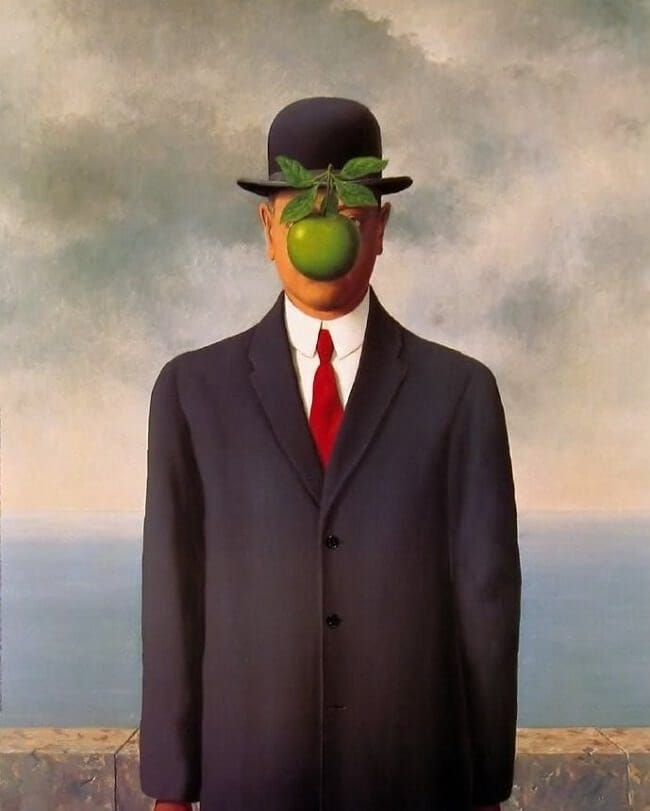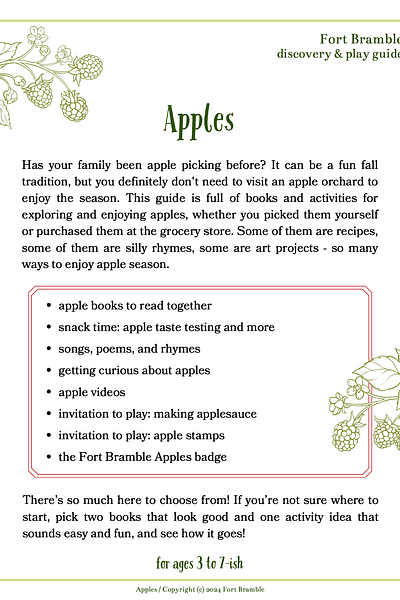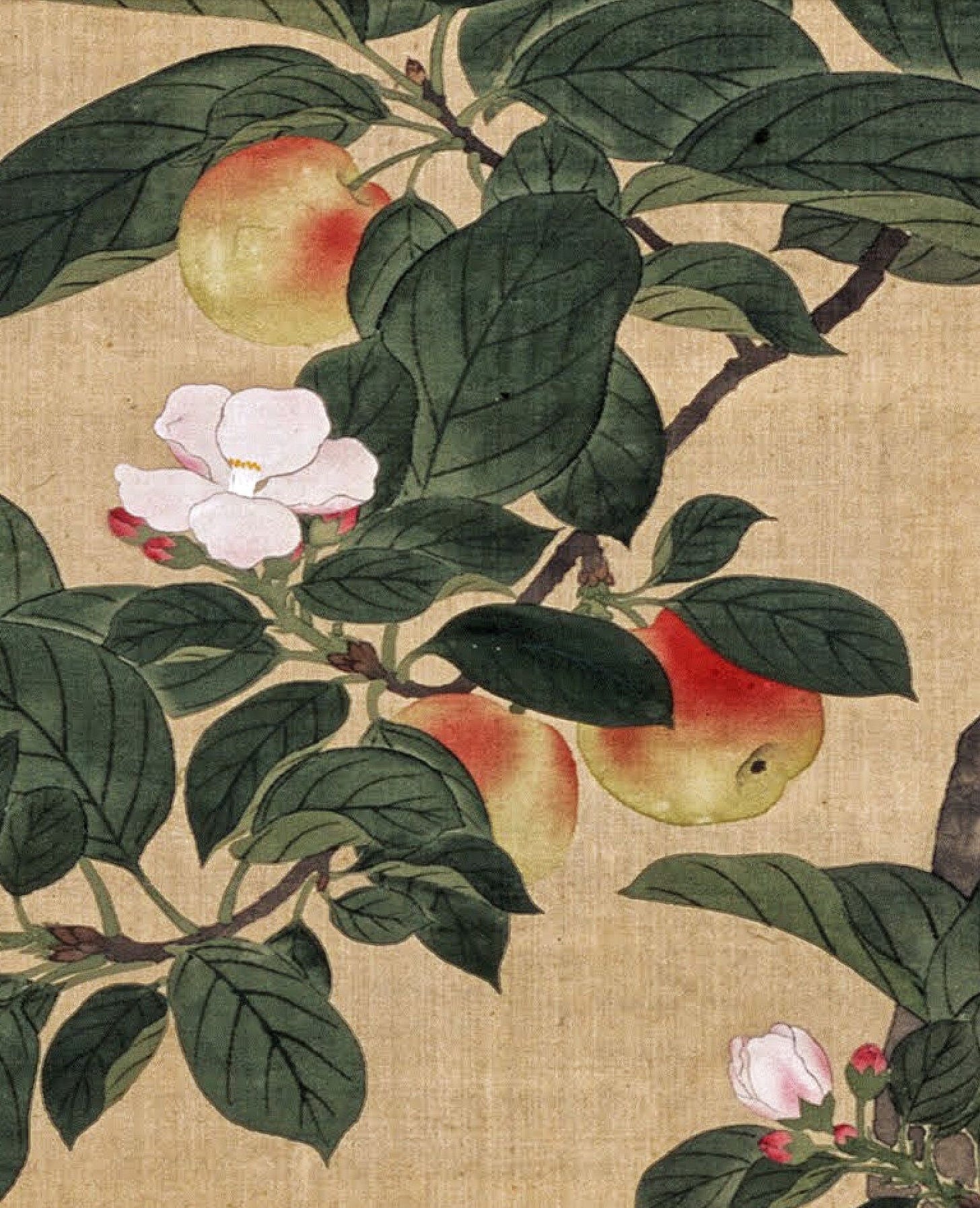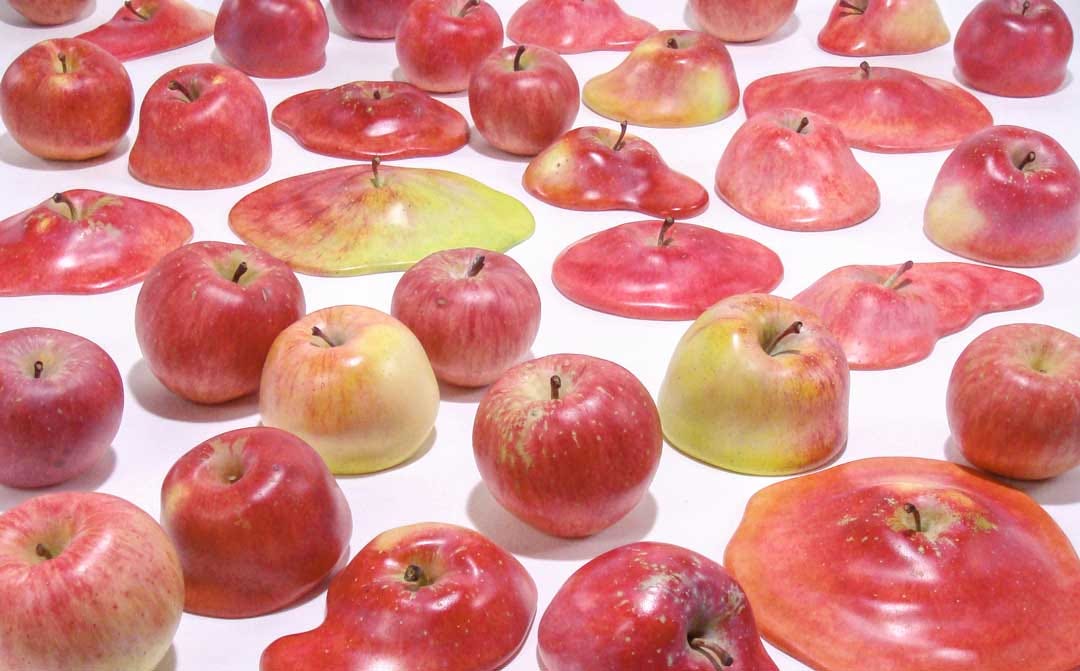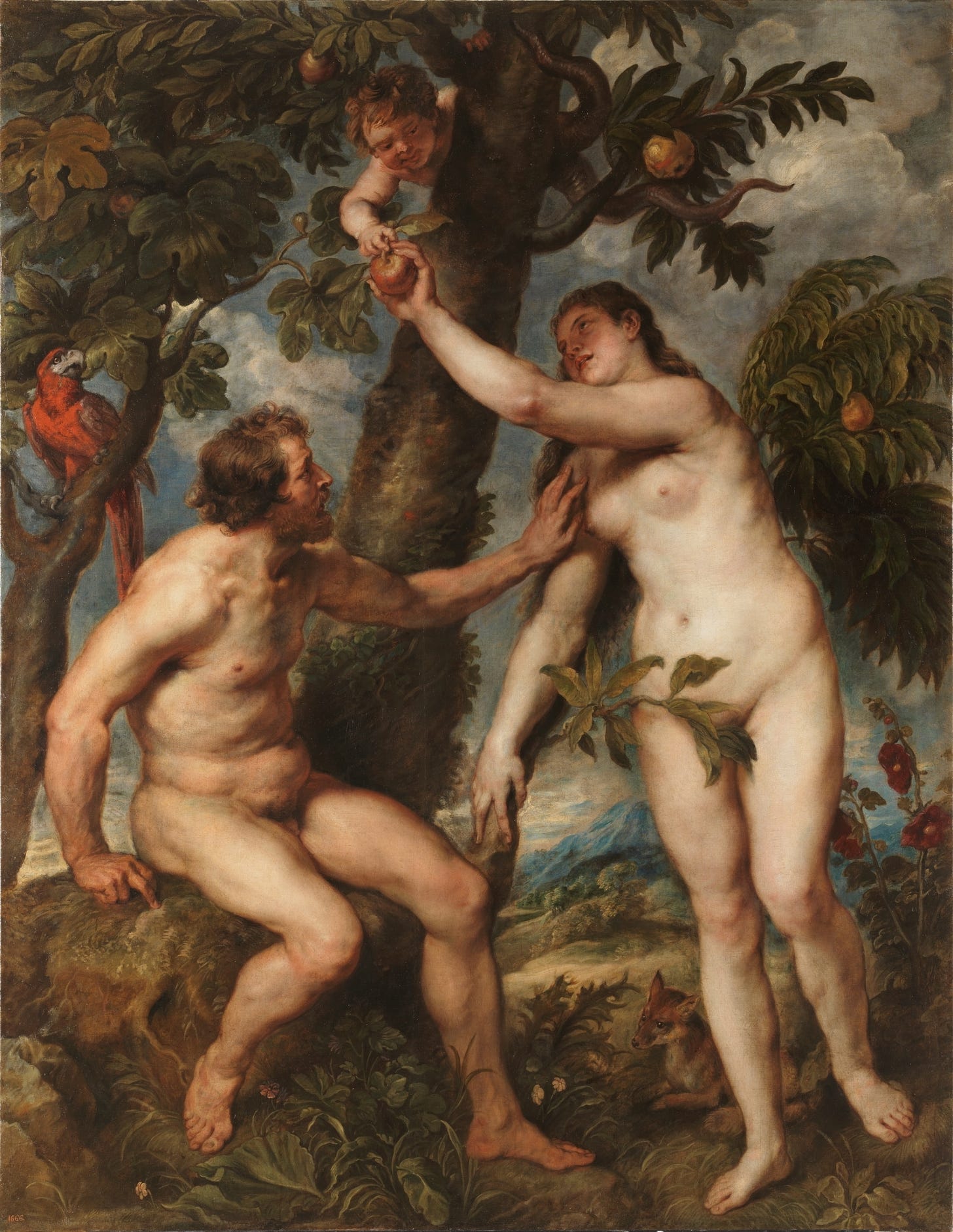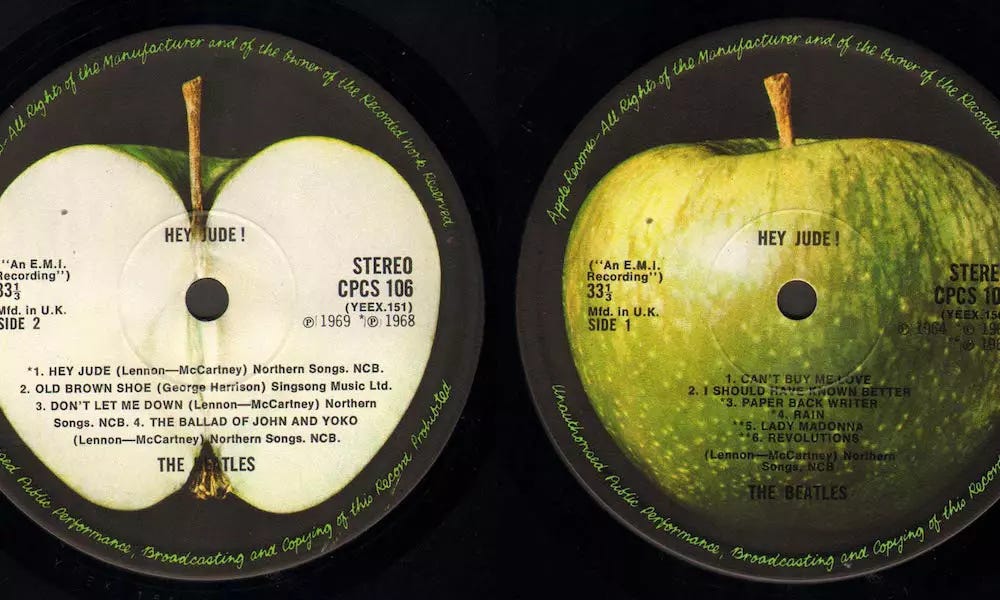Apples!
From Adam and Eve to Johnny Appleseed to Steve Jobs, here's your apple a day for today.
“The history // of apples in each starry core, // every papery chamber’s bright // bitter seed. Woody stem // an infant tree.” —Dorianne Laux, from A Short History of the Apple
It’s that time of year! Whether or not you enjoy a trip to the orchard for apple picking (and cider donuts!), you can’t deny that apples are part and parcel of fall in the United States. If you need a little help getting into apple season, this guide has got you covered.
What you’ll find in the Apples guide:
Apple Books to Share
Snack Time: Apple Taste Testing (and more!)
Invitation to Play: Making Applesauce
Invitation to Play: Apple Stamps
Plus tons more activities for exploring and enjoying apples, whether you picked them yourself or purchased them at the grocery store. Some of them are recipes, some of them are silly rhymes, some are art projects - pick one and have fun!
Guides are available to all subscribers for 1 month after they come out, and then they’ll go into the archive which is available to paid subscribers.
11 apple books to read with your kids.
Apples for Everyone by Jill Esbaum
Bad Apple by Huw Lewis Jones, illustrated by Ben Sanders
Applesauce Season by Eden Ross Lipson, illustrated by Mordicai Gerstein
The Apple Pie that Papa Baked by Lauren Thompson, illustrated by Jonathan Bean
Our Apple Tree by Görel Kristina Näslund, illustrated by Kristina Digman
Johnny Appleseed and the Bears by David Novak, illustrated by David Wenzel
The Gravity Tree: The True Story of a Tree That Inspired the World by Anna Crowley Redding, illustrated by Yas Imamura
Rain Makes Applesauce by Julian Scheer, illustrated by Marvin Bileck
Ten Apples Up On Top! by Dr. Seuss
Golden Delicious: A Cinderella Apple Story by Anna Egan Smucker, illustrated by Kathleen Kemly
It Might Be An Apple by Shinsuke Yoshitake
A riddle.
What is the house that is round and red,
without window or door, table or bed?
What house has a chimney on the top,
when the chimney breaks, the house will drop?
What house is it, when opened wide,
shows a star or two inside?
That house is an apple.
by David NovakThat’s so interesting!
Apples are ubiquitous and ordinary, right? I think not. Here are some fascinating links that I think show that even something as common as an apple can become the jumping off point for your own grown-up curiosity and wonder.
➵ Read: The Real Johnny Appleseed Brought Apples—and Booze—to the American Frontier (Smithsonian) “The apples that Chapman brought to the frontier were completely distinct from the apples available at any modern grocery store or farmers’ market, and they weren’t primarily used for eating—they were used to make America's beverage-of-choice at the time, hard apple cider.”
➵ Read: To Save Apples, Look to Their Wild Roots (National Geographic) “Last fall, I picked a wild apple from a tree growing in the Ile-Alatau Mountains of southern Kazakhstan. It was a Malus sieversii, wild ancestor of the cultivated apple. Biting into it, the flavor was bitter—a “spitter,” as apple aficionados call them—nothing like the sweet Fuji apples I eat from the tree on my family’s farm in Washington State.”
➵ Read: The Modern-Day Johnny Appleseed (The Meat Eater) “Brown, 81, is a die-hard apple hunter who traverses the Appalachians from Georgia to Pennsylvania tracking down and conserving lost and long-forgotten apple varieties.”
➵ Read: Why Do Teachers Get Apples? (HuffPost) Some theories on where the tradition of giving an apple to the teacher comes from (predictably ending with a bad joke about maybe teachers now would prefer an Apple computer to a Red Delicious).
➵ Read: Two funny takes on apple picking, both imagined as a dialog between Adam and Eve, from McSweeney’s: “If the Forbidden Fruit Were a Red Delicious Apple” and “Adam and Eve Go Apple Picking”
➵ Read: Harvesting the Power of the Sun to Turn Apples Into Art (Atlas Obscura) “Across a small number of orchards in northern Japan, apples grow in cocoons. For a few months during the summer and early fall, the squat, fruit-bearing trees dotting the landscape dangle small, waxy pouches from their branches. But a closer peek would reveal that these little chambers are carefully tailored bags, each one enshrouding a tiny, cream-colored globe. These are mojie apples in their infancy, and they’re quietly growing into canvases.”
➵ Read: Apple picking is a bizarre imitation of hard work (Vox) “Quality apples are generally easily available at grocery stores, and it’s not as though such heavily romanticized traditions are built around gathering other foods. (To wit, a 2015 New Yorker cartoon depicted a family picking apples with the caption: ‘Maybe next time we can go mine our own salt.’)”
➵ Watch: Apple: How Does it Grow? (True Food TV) “Each apple seed is genetically unique. It will grow a completely different apple than the one it came out of, which could be a major problem for the farmers who want to grow the apples we know and love.”
➵ Read: Why is Apple Called Apple? (Macworld) Is it just because Apple comes before Atari in the phone book?
“Some gnarly apple which I pick up in the road reminds me by its fragrance of all the wealth of Pomona,—carrying me forward to those days when they will be collected in golden and ruddy heaps in the orchards and about the cider-mills.”
—Henry David Thoreau, Wild Apples: The History of the Apple-Tree (The Atlantic, 1862)
I hope you loved the Apples guide! For more Discovery & Play Guides, click this green button here to find the full archive.
Hug and kiss, Granny Smith!
Love, Kathryn


